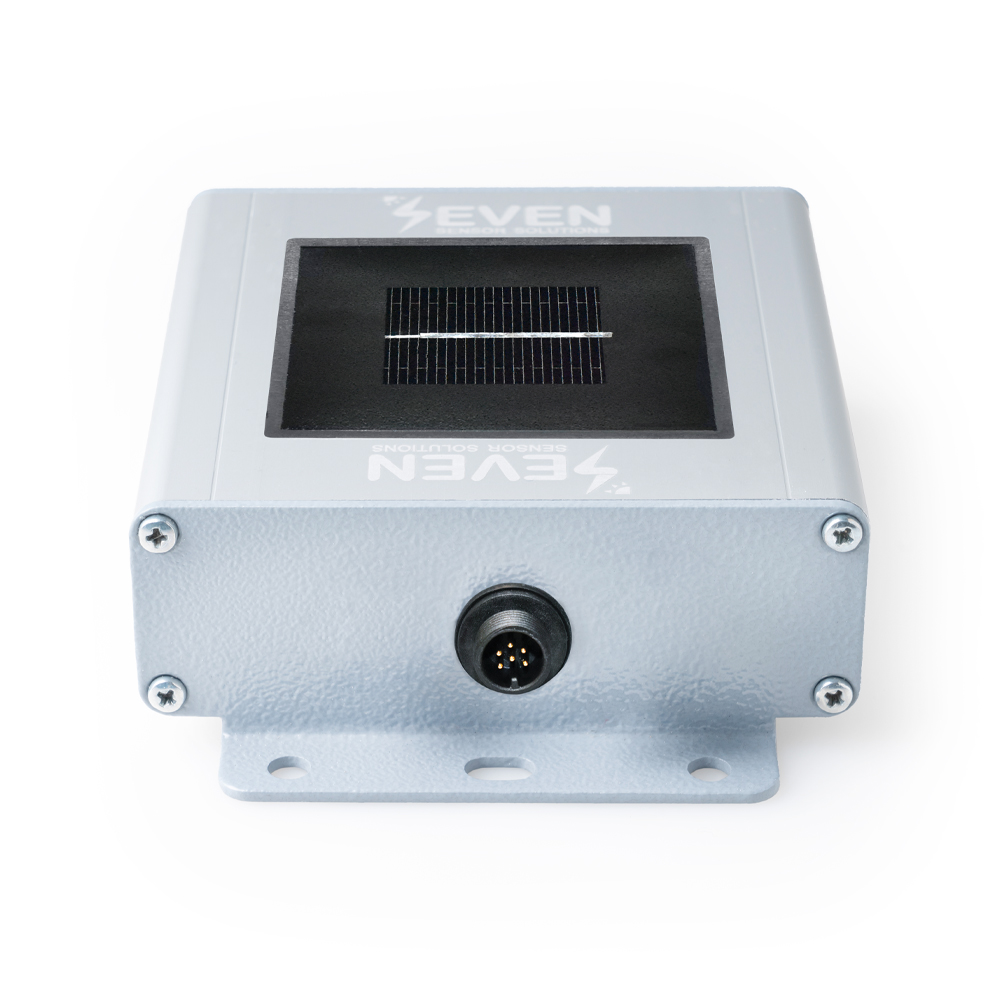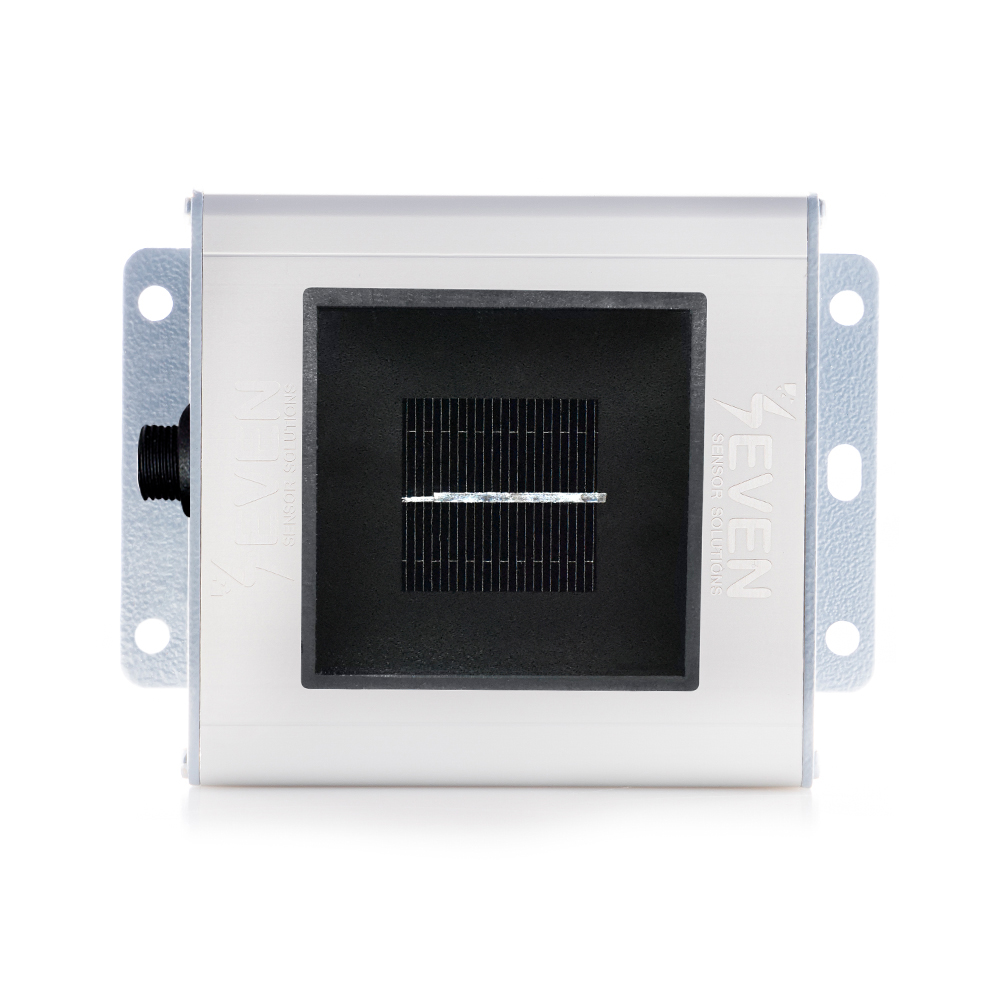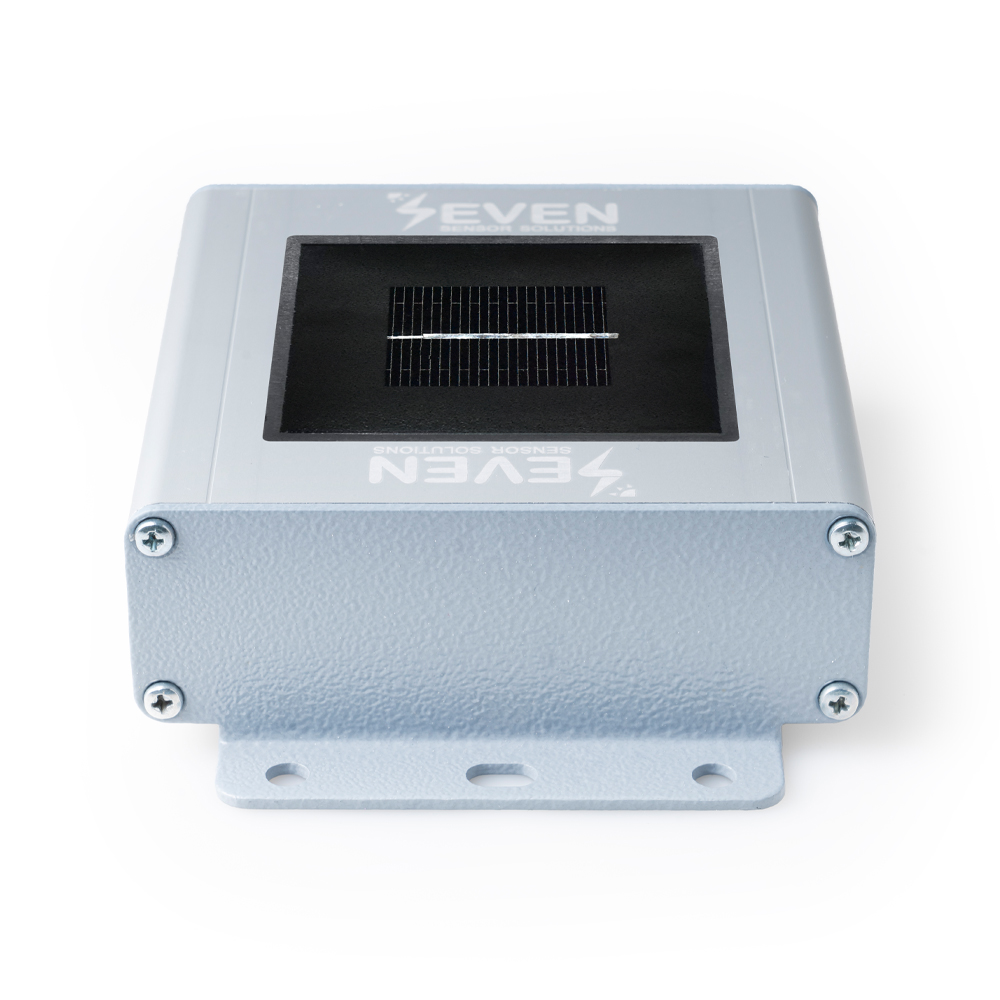Your cart is currently empty!
Irradiance Sensor With
4-20mA Output
This Irradiance Sensor is used to measure the radiation flux density of Solar PV Plants having an 4-20mA Input Datalogger. Besides Irradiance, it includes also an Internal cell Temperature Sensor. It is supplied along with Mounting Bracket and Cable.
WORKING PRINCIPLES
A silicon solar cell can be used as an irradiance sensor, because the short-circuit current is proportional to irradiance. Our sensors are built out of a monocrystalline solar cell connected to a shunt. Due to the low resistance of the shunt the cell operates next to short circuit.
The temperature coefficient of the short-circuit current creates a small error. The compensation is realized by using a temperature sensor laminated to the rear side of the solar cell. The measuring signals of short- circuit current of the cell and the resistance value of the temperature sensor are measured by a micro controller. The calculated values of irradiance and temperature given onto a 4-20mA protocol. The electronic circuit is optimized for low power consumption.
CONSTRUCTION FEATURES
Monocrystalline Cell: The cell is laminated with 2 EVA sheets, one Tedlar sheet and 3mm tempered glass under 180 °C homogeneous temperature and under vacuum effect. The size of the monocrystalline cell is 52×52 mm² or 31x31mm².
Sensor Box: It is an UV protected aluminum box. The sensor box has two opening access and the mounting holes on its sides are for easy site installation. There are three options for IP Class; IP54, IP65 and IP68. For ventilation purpose, there are 1mm holes at bottom side of the box, or a ventilation plug on its side.
TECHNICAL DATA
| Item Code | 3S-IS-T-I |
| Reference Cell | Monocrystalline Silicon (31 mm x 31 mm) |
| Current Shunt | High precision shunt resistor directly soldered to the terminals of the cell |
| Irradiance Range | 0 – 1500 W/m² |
| Uncertainty | ≤1,2%, as per IEC61724-1 standard Class A |
| Resolution | 0.1 W/m² ≤ 1W/m²; as per IEC61724-1 standard Class A |
| Response Time | 1 sec. less than 3 sec; as per IEC61724-1 standard Class A |
| Drift | Very small drift of <0.3%/ year |
| Field of View | Larger than 160° as per IEC61724-1 standard Class A |
| Tilt-Azimuthal Angle | 0°- 0° , ≤ 1°; as per IEC61724-1 standard Class A |
| Output Rate | 1/s |
| Data Output | Analog 4-20 mA |
| Power Supply | 12 to 30 V DC |
| Power Consumption | 50 mA max @24 VDC |
| Electrical Connection | 3 m LIYYC11Y PUR Cable, UV and Weather Resistant |
| Cell Temperature Sensor Type | PT1000 Class A as per EN 60751 |
| Operating Temperature Range | -40°C to +85°C |
| Operating Humidity Range | 0 to 100 % |
| Box Dimensions | 140 mm x 110 mm x 42 mm (W x L x H) |
| Weight | 0.3 kg |
| IP Rating | IP54 (IP65, IP68 options) |
| Sensor Housing Material | Aluminum |
| Compliant Standard | IEC 61724-1:2021 and IEC 60904 |
| Calibration | Each sensor is calibrated under Class AAA Sun Simulator as per IEC 60904-2 and IEC 60904-4 by using a reference cell calibrated by ISFH-Germany |
| Test | The test is carried under natural sunlight by using a calibrated reference cell from Fraunhofer ISE, Germany |
SEVEN Sensor Solutions, as a weather station supplier, produces two types of irradiance sensors: one with a Modbus RTU output and other with an analog output.
SEVEN’s Analog Irradiance Sensor
In general, analog sensors produce a continuous output signal or voltage that is usually proportional to the measured quantity. Physical quantities such as temperature, velocity, pressure, displacement, strain, etc. are all analog quantities because they tend to be continuous in nature.
The SEVEN Irradiance Sensor, with 4-20mA output, is a weatherproof junction box made of UV-resistant materials. It is made from a monocrystalline solar cell connected to a high-precision shunt. It contains an analog output which is used to measure the radiation value in solar power plants by plugging into analog input dataloggers.
The 4-20mA irradiance sensor is mounted in such a way that it receives solar radiation straight from the sun. It must therefore be aligned with the photovoltaic panels in order to obtain the same measurements. The height at which the photovoltaic pyranometer is mounted is not critical for the accuracy of the measurement. SEVEN sensor Solutions provides an irradiance sensor with mounting brackets on both sides, so that it can be flexibly mounted on the solar panel, no matter where it is located.


